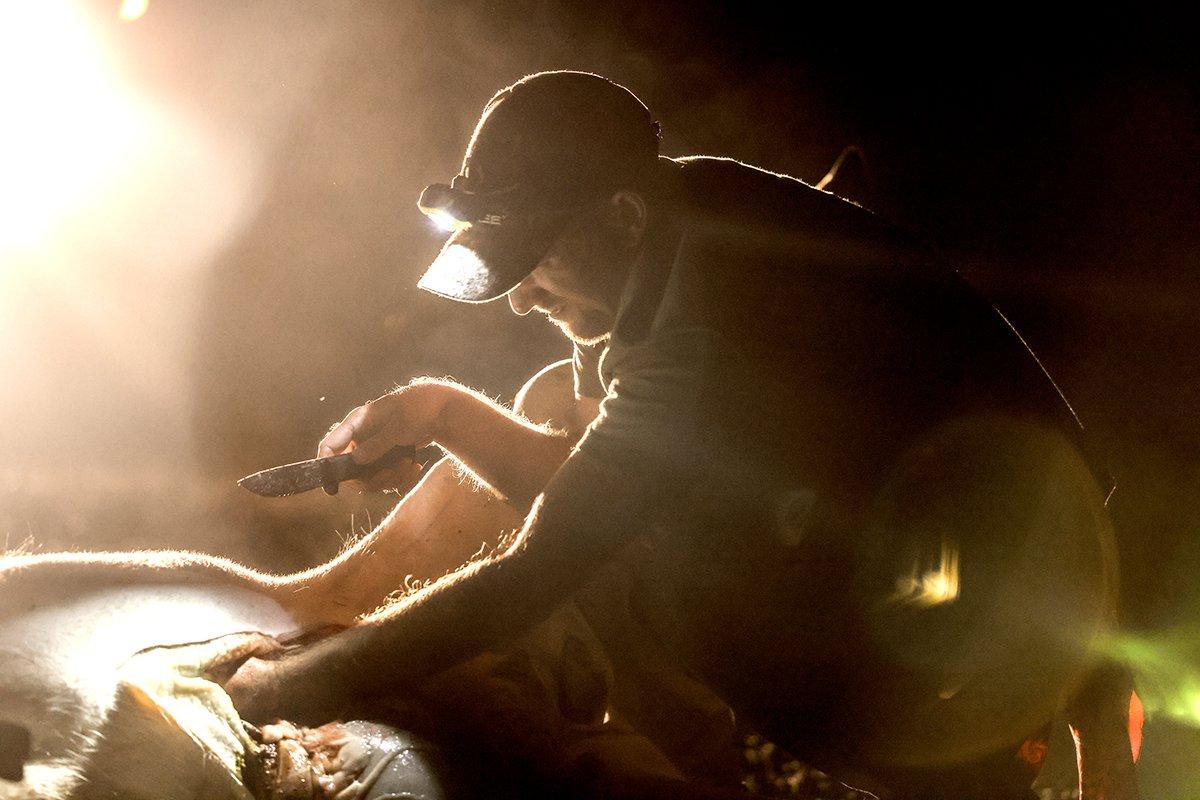Checking the contents of your deer's stomach can cue you into what a buck's really feeding on in the late season
Phil Anderson has a job only a whitetail freak like you and me could love. I snoop around in gut piles, says the animal nutrition consultant from Pennsylvania. The cool thing about rooting around in guts is that you get the most recent information as to what that deer ate the last day or two, not what you think it was feeding on or what some 'expert' said the deer should eat late in the season.
Here's how to use that weird science to your advantage.
Sample Collecting
Once you've shot and dressed a deer, roll the entrails away from the carcass, hold your nose, and slit the large, bag-like rumen, or paunch. Reach inside (rubber gloves recommended!), fetch a sample and bag it.
A quart of the stuff is plenty, and I suggest double or triple Ziplock baggies, says Anderson.
Back home, pour the gory sample onto a piece of quarter-inch screen and spray lightly with a water hose. Note the larger particles that remain exposed on the screen — pieces of corn, fruit, nuts, mushrooms, etc. And try to identify leaves or plant parts before they dry out, shrivel and become hard to recognize, Anderson says.
What Guts Can Reveal
It's late in the season and your buddy shoots a doe or buck. The woods are bare and brown all around, but the animal's rumen contents are bright green. Yesterday, that animal was either browsing green leaves in a thicket, or perhaps pawing for winter tubers that are popping up beneath dead leaves. Scout a nearby ridge or swamp with green thickets, or look for a large swath of freshly upturned leaves. Check to see if little green tips are sprouting in the duff. If so, set up close and fill your last tag. Good chance you will.
Or, say you shoot a big-woods buck to end your season. After gutting it and examining the stomach contents, you find mostly corn fragments. Have your buddy set up in a creek drainage, hollow or similar funnel that leads to and from the nearest cut corn field on a neighbor's property. There's a good chance he'll see deer, and shoot one moving between feed and bed.
While the instant gratification of filling a last deer tag is possible, Anderson says the greater value of gut-pile science is in the long run.
Examining and recording the stomach contents of many animals over many seasons will provide valuable insights as to the patterns of the deer on your land, specifically how, when and where they move and feed at different times of the season, he says.
The gut-pile scientist has monitored the rumen contents of both bucks and does on his Pennsylvania tract for a long time. Most years there are cornfields within a mile or so of his woods, but interestingly, few deer they've killed and examined have had corn in their stomachs.
Not knowing better, you would bet the farm that most of those bucks and does were moving to feed in the corn, especially late in the season, he says. But having examined the gut piles of dozens of deer shot over the years, Anderson has found that for whatever reason corn is not a major food source for the local herd during late fall and winter. He's also learned something else: Almost every deer they've killed up through late muzzleloader season has had crabapple remnants in the rumen.
Now we forget about the corn and focus on the crabapples, and we see and shoot more deer, he says.
(Don't Miss: Do Gut Piles Spook Deer?)








